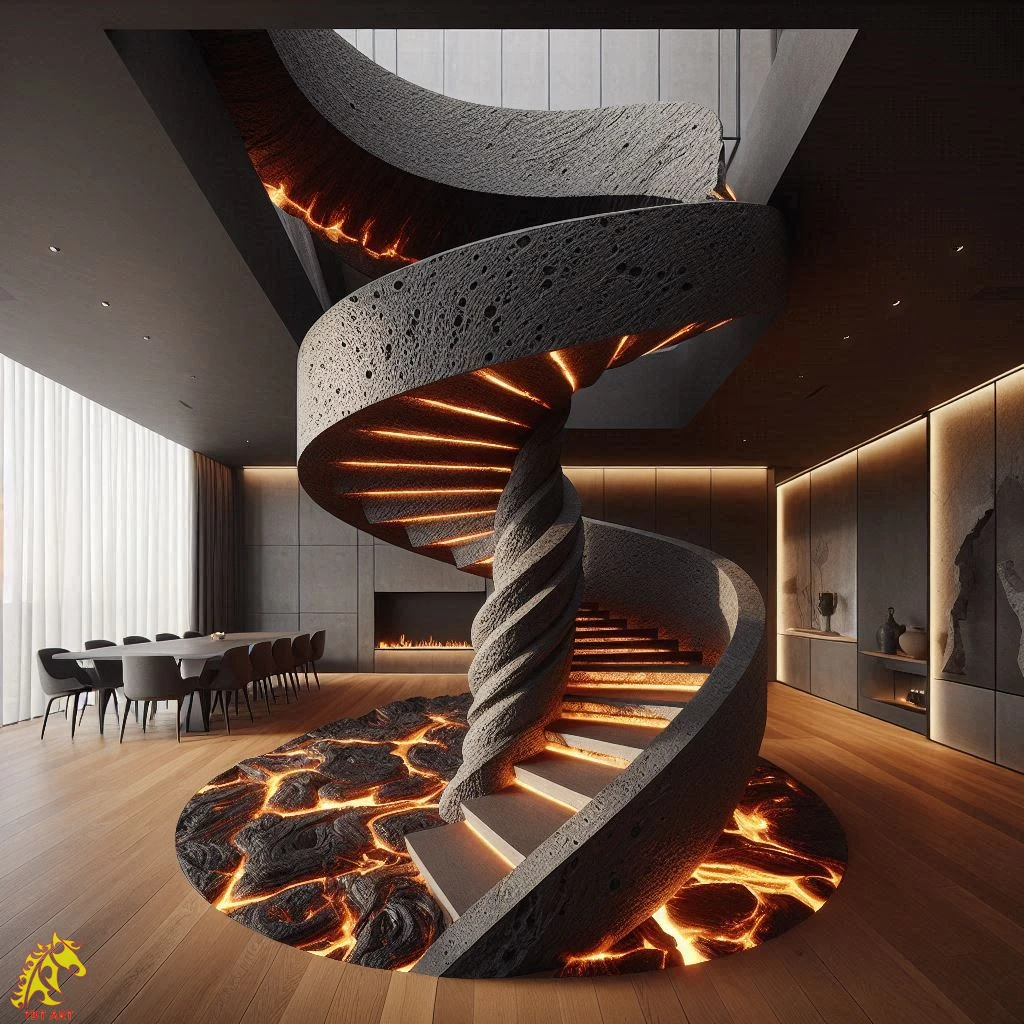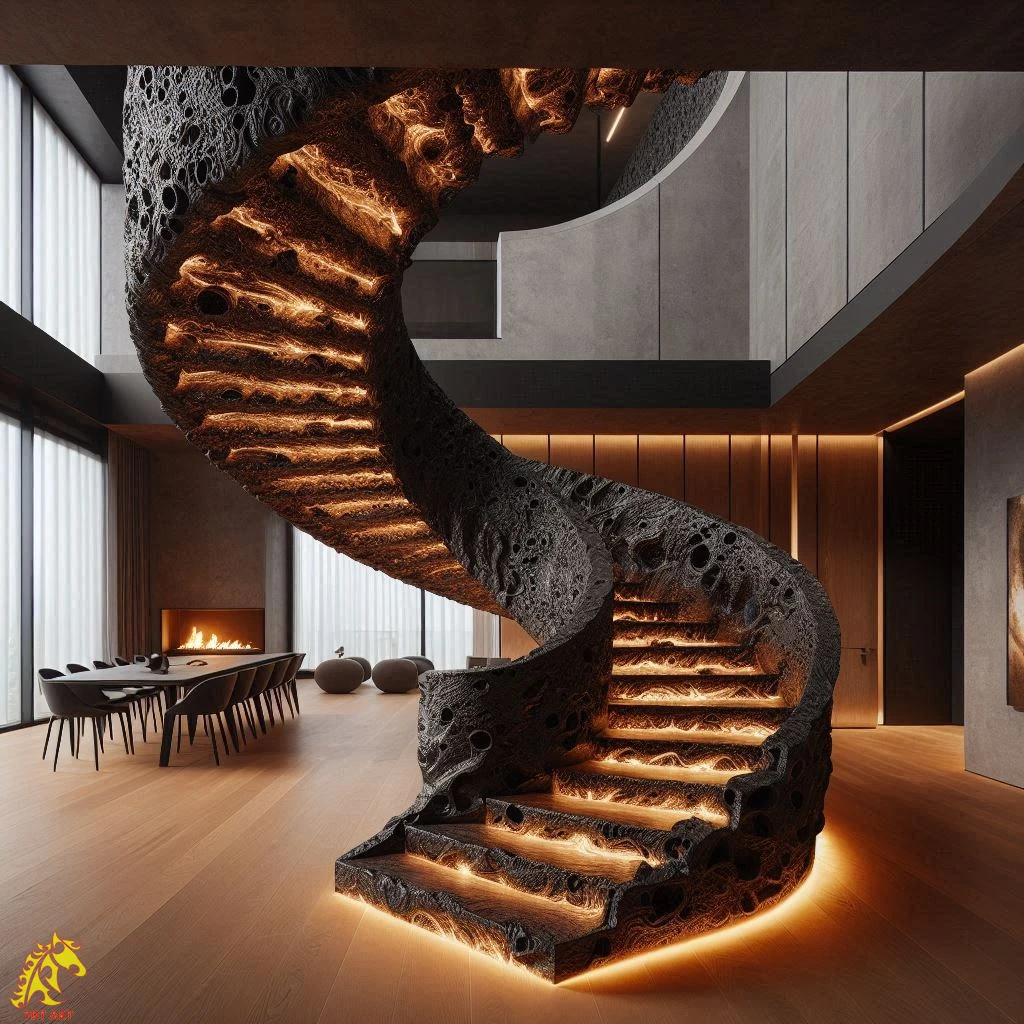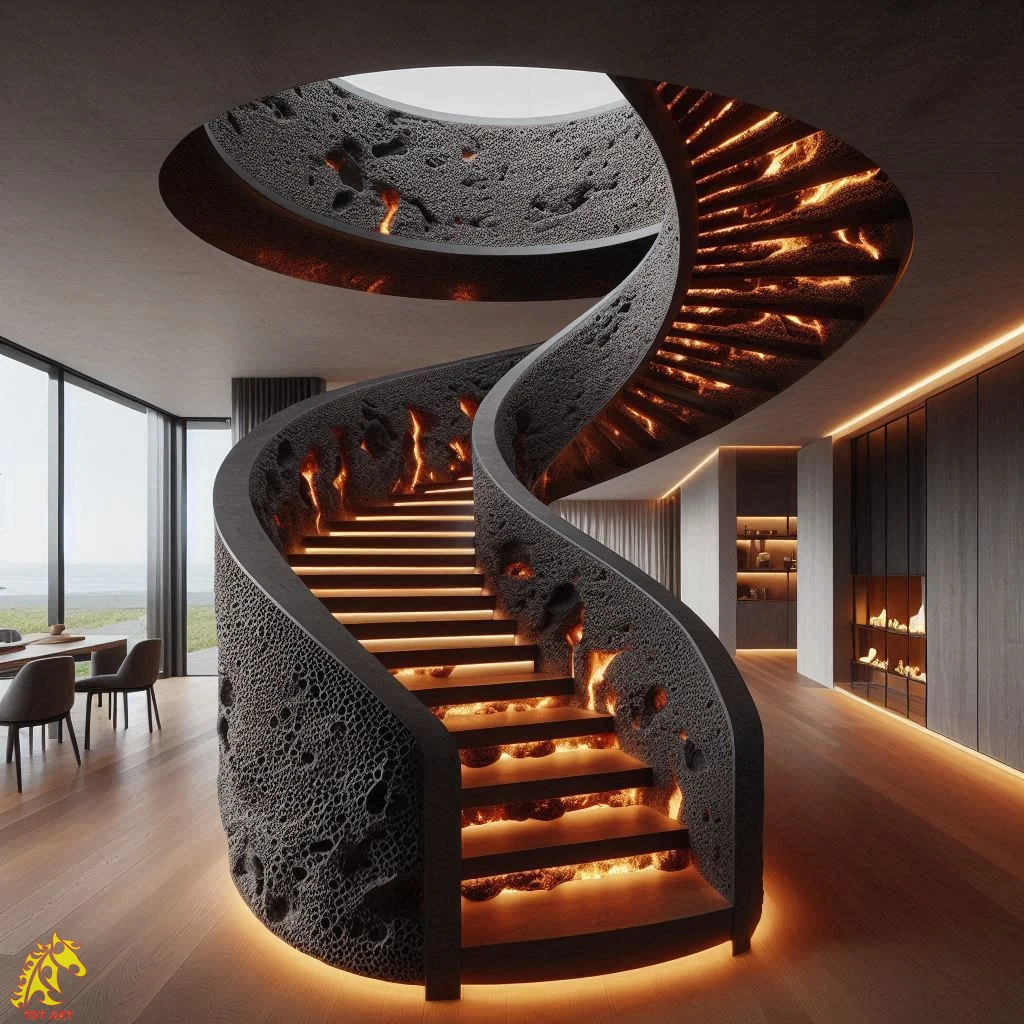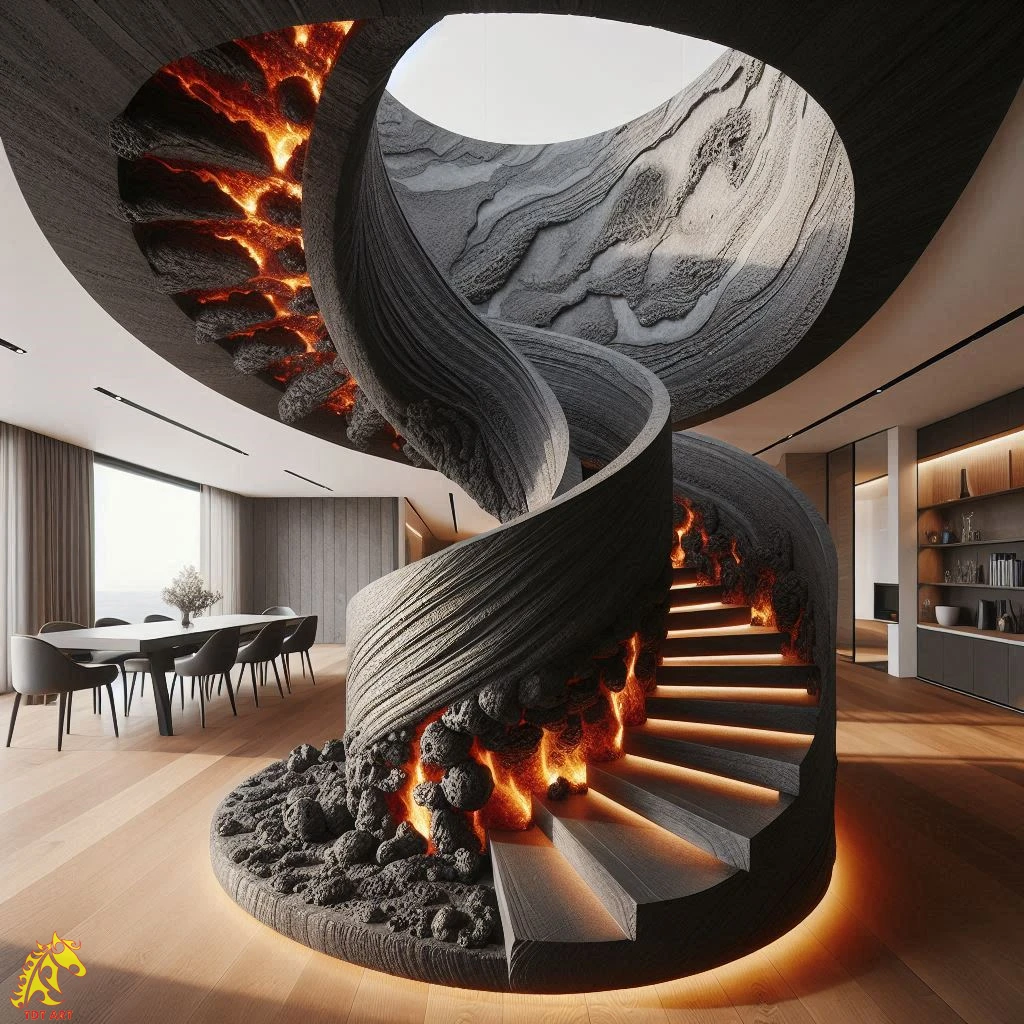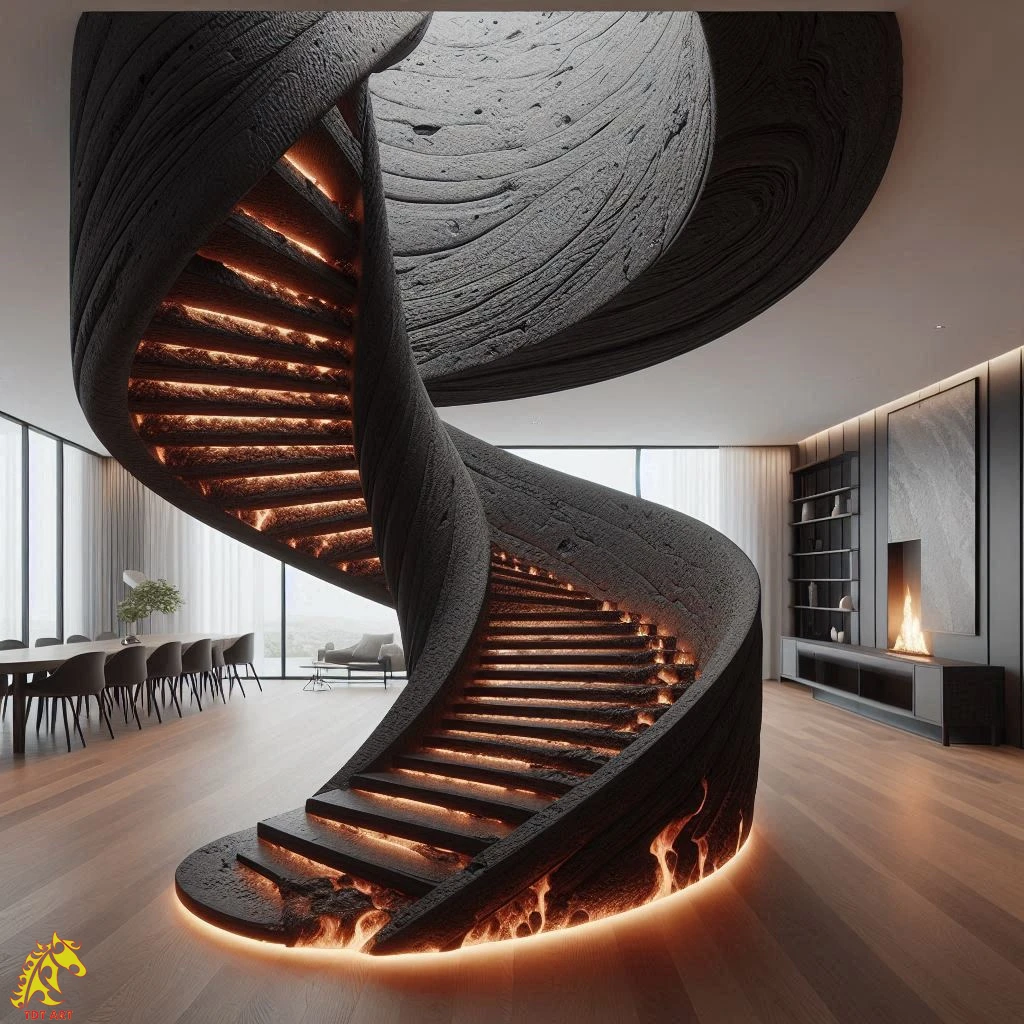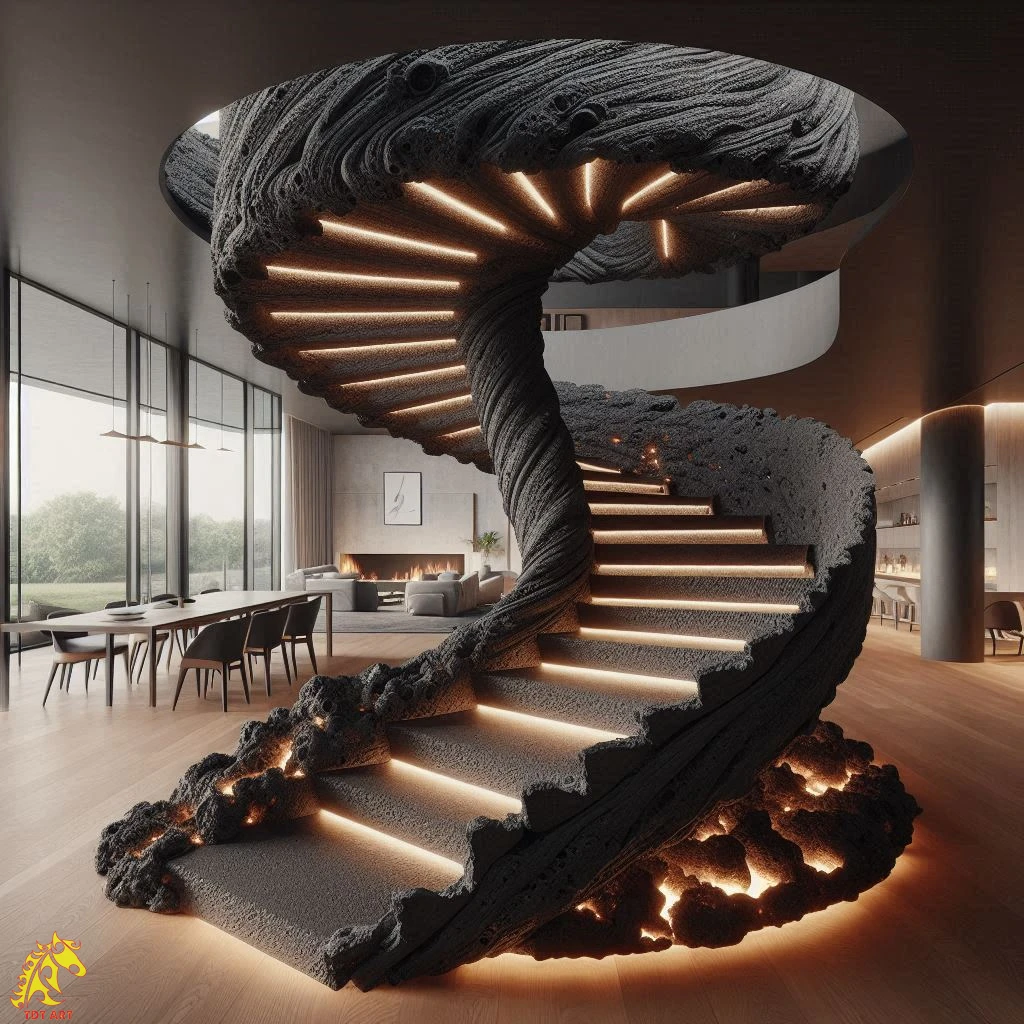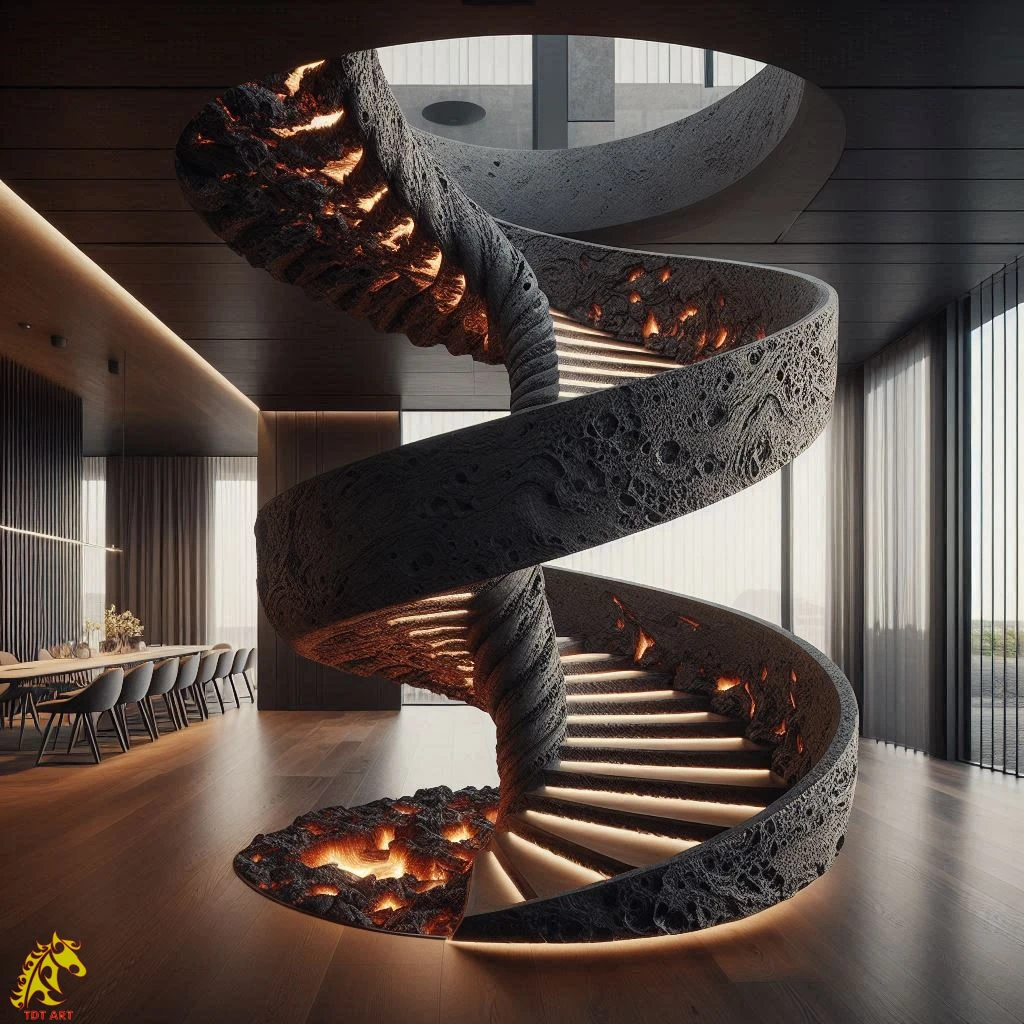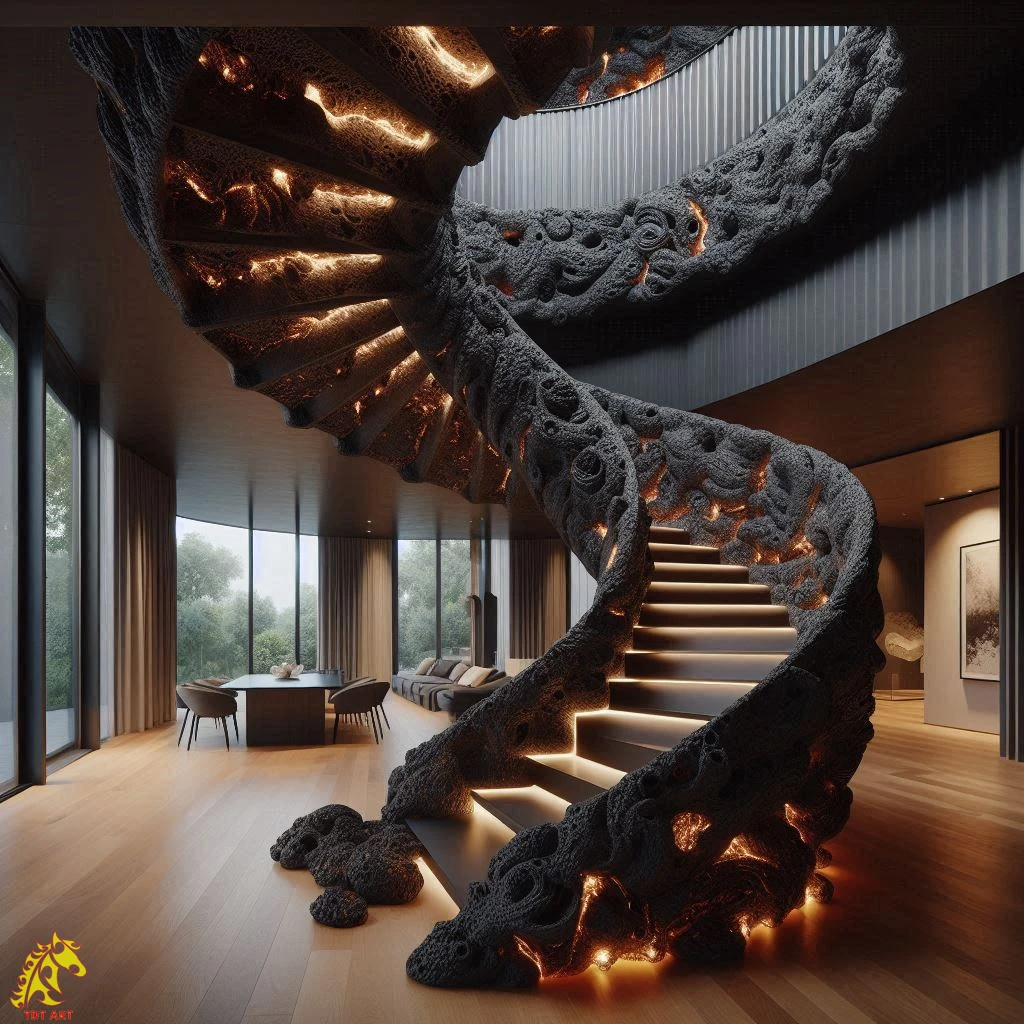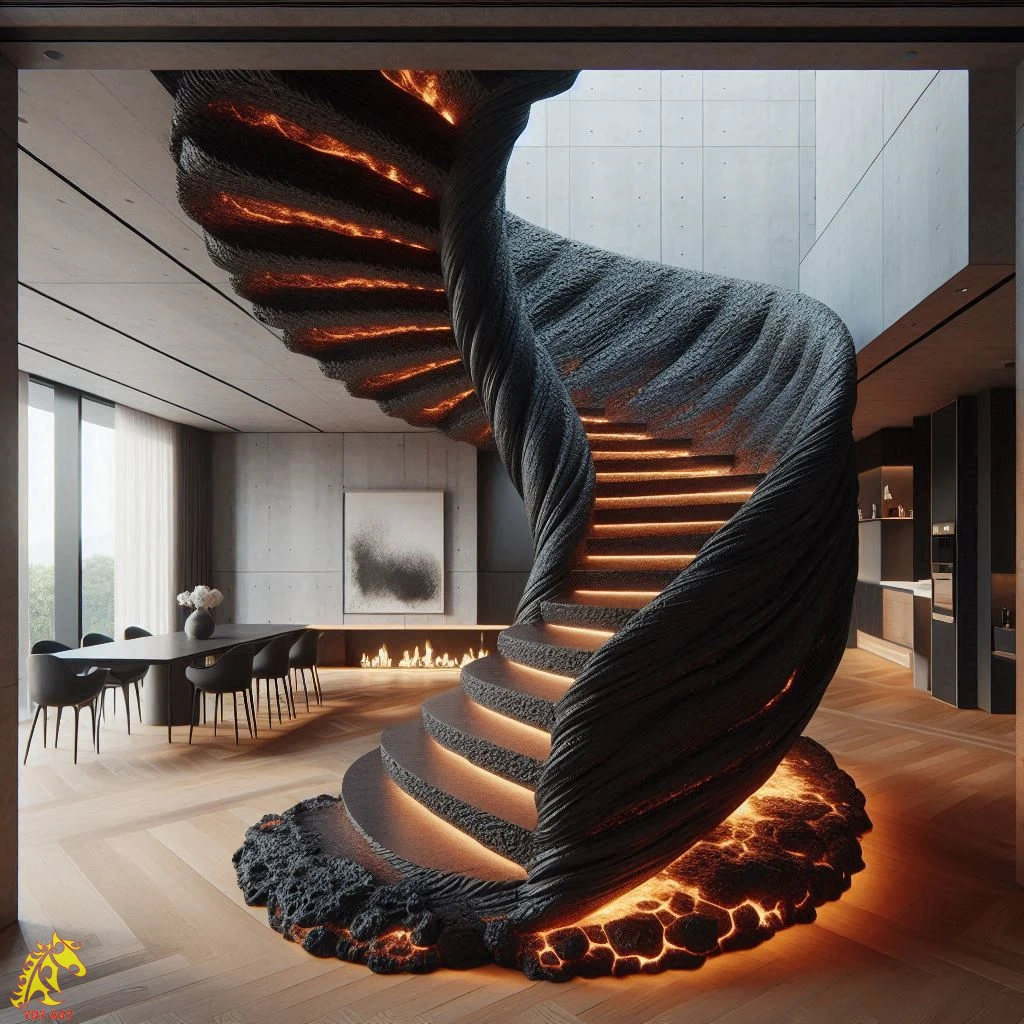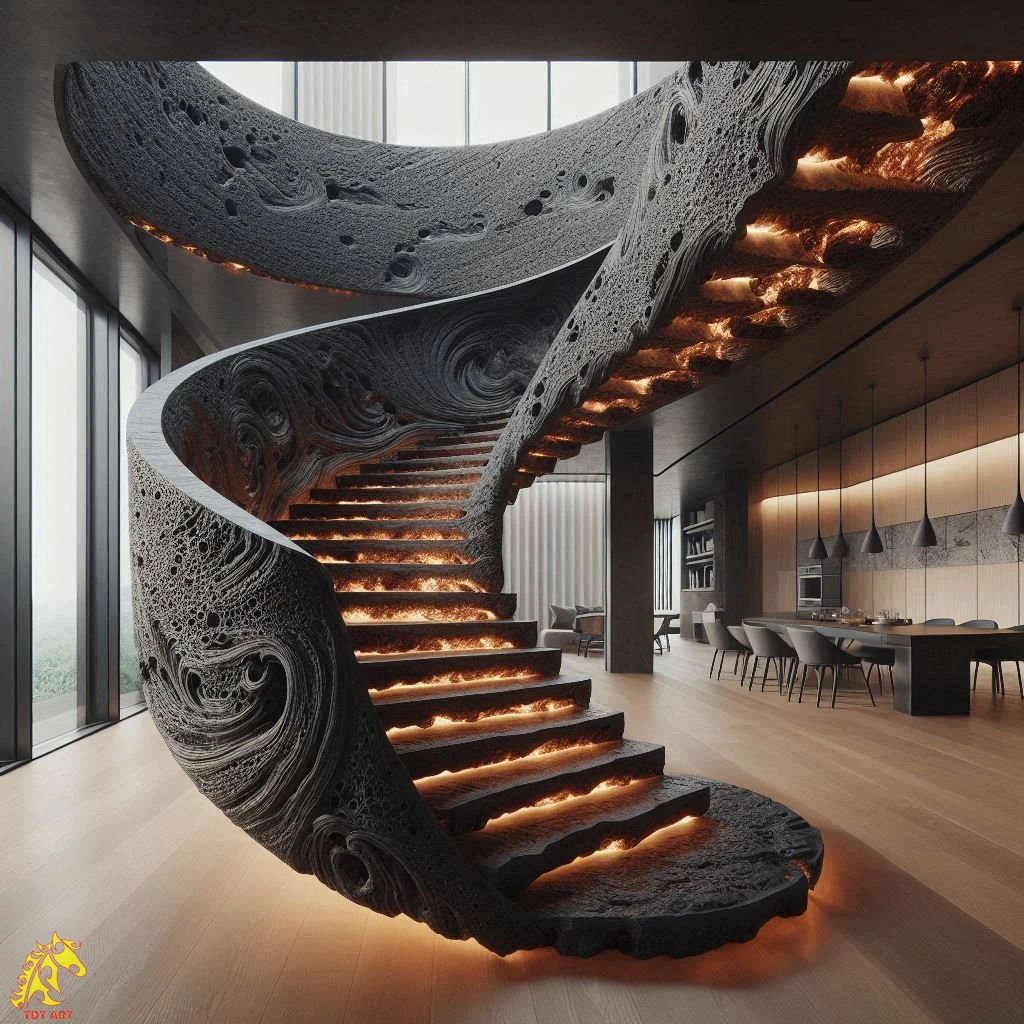Exploring the fascinating realm of lava staircase design is a captivating journey. From sleek modern interpretations to rustic natural inspirations, the versatility of lava in architectural elements is truly remarkable. The intricate interplay of texture, color, and form in lava staircase designs creates a striking visual impact in any space. Whether seeking a bold statement piece or a subtle organic touch, lava staircases offer a unique blend of functionality and aesthetic appeal. Dive into the world of lava staircase design to discover how this volcanic material can elevate the ambiance of your home or project.
Key Takeaways
- Incorporate lava staircases for a unique and striking aesthetic appeal in your home design.
- Explore various styles and designs of lava staircases to find one that complements your interior decor.
- Consider using materials like volcanic rock, basalt, or lava stone for durability and a natural look in your lava staircase.
- Prioritize safety and functionality when planning a lava staircase, ensuring proper dimensions, handrails, and non-slip surfaces.
- Balance the visual impact of a lava staircase with practicality by integrating lighting elements or contrasting materials for a cohesive design.
- Enhance your living space with the timeless beauty and organic feel of lava staircases, creating a focal point that merges artistry and functionality seamlessly.
Aesthetic Appeal of Lava Staircases
Visual Impact
Lava staircases boast a unique visual impact, particularly evident in spiral designs, adding a touch of volcanic inspiration to any space. The rocky lava surface texture creates a mesmerizing blend of ruggedness and modern aesthetics.
The aesthetic impact of lava staircases lies in their ability to mimic the natural beauty of volcanic landscapes, infusing spaces with an unparalleled sense of artistry. The mesmerizing swirls and colors on the stairs evoke a sense of movement and fluidity.
Transformative Effect
When illuminated by natural or artificial light, lava staircases undergo a transformative effect, accentuating their sculptural qualities. The interplay of light and shadow enhances the staircase’s artistic design, showcasing its depth and dimension.
- Pros:
- Creates a captivating focal point in architectural environments.
- Offers unparalleled design versatility for interior design projects.
- Cons:
- Requires specialized construction techniques due to the unique material properties.
- Maintenance may be more challenging compared to traditional ceramic floor tiles.
Styles and Designs of Lava Staircases
Versatile Design Options
Lava staircases offer a wide range of design possibilities, from spiral lava epoxy staircases to custom lava alto steps. These designs can be tailored to suit individual preferences, allowing for expressive designs that stand out in any space.
Creating a lava staircase involves utilizing the unique properties of volcanic lava flow, resulting in bold swirls and intricate patterns. Designers can experiment with different color arrangements to evoke specific moods or themes within a room. The adaptability of lava staircases enables them to seamlessly blend into various architectural styles, whether modern or traditional.
Diverse Architectural Styles
When it comes to incorporating lava staircases into architectural designs, designers have the freedom to explore various styles. Whether it’s a tiled staircase in a contemporary setting or a story staircase in a more classic environment, lava staircases can complement diverse architectural themes.
The construction techniques used in crafting lava staircases play a crucial role in achieving both aesthetic appeal and structural integrity. By understanding the geological properties of volcanic regions, designers can create durable and visually striking staircases that become focal points in any space.
Materials Used in Lava Staircases
High-Quality Lava Rock
Lava staircases typically rely on quality lava rock as a primary material for their construction. The use of lava stone ensures durability and a unique aesthetic appeal. The volcanic origin of lava rock provides a natural yet striking look to the staircase design.
Craftsmen often select specific textures and colors of lava rock to enhance the visual impact of the staircase. By choosing the right variations, they can create a visually stunning focal point in any space. The selection process involves considering factors like color contrast and surface finish to achieve the desired design outcome.
Epoxy Resin Application
Epoxy resin plays a crucial role in the fabrication of lava staircases, acting as a binding agent for the lava rock components. The application of epoxy resin requires precision and expertise to ensure a strong bond between the lava stones. Skilled craftsmanship is essential during the mixing and curing processes to guarantee structural integrity and longevity.
In personal experience, I have found that the combination of high-quality lava rock and expertly applied epoxy resin results in a visually stunning staircase that withstands daily wear and tear. The intricate process of selecting, shaping, and bonding lava stones highlights the artistry involved in creating these unique architectural features.
Practical Considerations for Lava Staircases
Space Efficiency
Spiral designs offer space-saving advantages, making them perfect for compact areas. Their unique structure allows for a small footprint while maintaining functionality.
Longevity of Epoxy Resin
The use of epoxy resin in lava staircases ensures long-lasting durability with minimal maintenance required. This feature makes them a cost-effective and practical choice for homeowners and businesses alike.
Versatility in Design
Lava staircases are highly adaptable, suitable for use in both residential and commercial settings. They can be customized to fit various styles and preferences, serving not only as a means of vertical circulation but also as decorative elements within a space.
I have found that incorporating a lava staircase in a small apartment can significantly enhance the overall aesthetic appeal while maximizing the available space. The durability of epoxy resin has been particularly beneficial, requiring little upkeep compared to traditional materials. The versatility of lava staircases allows for creative design options tailored to individual needs.
Final Remarks
In exploring the aesthetic appeal, styles, designs, materials, and practical considerations of lava staircases, it becomes evident that these unique architectural elements offer both beauty and functionality to spaces.
The versatility in design and the durability of materials make lava staircases a compelling choice for those seeking a blend of artistry and utility in their homes or buildings. As we delve deeper into the intricacies of lava staircase design, it is clear that each aspect contributes to creating a statement piece that enhances the overall ambiance of any environment.
For those considering incorporating lava staircases into their spaces, a thorough understanding of the design options, material characteristics, and practical implications is essential. By carefully weighing these factors and working with experienced professionals, one can achieve a stunning lava staircase that not only impresses visually but also stands the test of time.
Frequently Asked Questions
What are the key factors that contribute to the aesthetic appeal of lava staircases?
Lava staircases stand out due to their unique texture, natural color variations, and the way they can be shaped into artistic designs. The organic feel and earthy tones of lava add a touch of sophistication and elegance to any space.
What are some common styles and designs available for lava staircases?
Lava staircases can be crafted in various styles, including straight, spiral, curved, or floating designs. Each style offers a distinct visual impact and can be customized to suit different architectural preferences and interior themes.
Which materials are commonly used in the construction of lava staircases?
Lava staircases are primarily made using basaltic lava rock, known for its durability and heat resistance. Other materials such as steel or glass may be incorporated for structural support or decorative purposes, enhancing the overall aesthetic appeal of the staircase.
What practical considerations should be taken into account when installing lava staircases?
Factors such as load-bearing capacity, safety features like anti-slip surfaces, maintenance requirements, and compatibility with the existing interior design should be carefully evaluated before installing a lava staircase. Consulting with experienced professionals is recommended to ensure a successful installation process.

